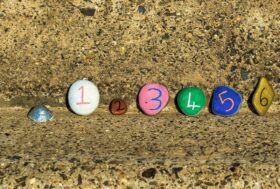Revision Generator

In the last few decades, the evidence from neuroscience and cognitive psychology has enriched our understanding of how we learn (Bransford et al., 2000). Schools are increasingly deploying these findings to make students’ learning stick (Brown et al., 2014). From my own experience and conversations with fellow teachers, I noticed that one lesson is typically insufficient to create learning that lasts over time. ‘Repetition is the key’; however, research suggests that revisiting the same concept repeatedly is much less effective than spacing it out (Atkinson and Shiffrin , 1968); (Hattie , 2009). These and other studies suggest that the best way to revise is through regularly revisiting old topics (Dunlosky et al., 2015). In contrast to cramming, spaced learning ensures a long-lasting learning, which is reinforced by regular retrieval of the ‘forgotten’ material (Benjamin and Tullis , 2010). Furthermore, it is suggested in the literature that interleavingAn approach to learning where, rather than focusing on one p improves students’ ability to discriminate in test situations between different types of problems and select the right solutions (Rohrer , 2012). Arguably, these techniques improve students’ conceptual understanding, going beyond memorisation (Roediger et al., 2011).
Whilst literature suggests that cognitive strategies, such as spaced repetition and interleaving, can facilitate learning and retention of hard concepts (Brown et al., 2014), teachers can find it difficult to find time to provide students with revision resources that embed these ideas. I used to make revision timetables manually for my A-level mathematics students, but to address this more efficiently, I developed an automated tool called Revision Generator. Still a beta version, the tool creates revision timetables from a list of topics provided, allowing teachers to tailor revision specific to their students’ needs. The long-term goal is to release an improved version of Revision Generator, with a simple graphical user interface and a list of topics in mathematics across the key stages, and to inspire teachers of other subjects to adopt similar approaches.
Research methods and findings
Reading the literature on the science of learning inspired me to rethink how I facilitate students’ revision. To explore the problem of memory retention for harder topics in mathematics, I carried out a focus group with teachers in my department and analysed their responses. I also delivered a whole-school CPD on effective revision techniques and listened to the feedback of my colleagues. The lack of time for creating personalised revision timetables emerged as an issue from informal discussions with teachers, so I came up with the idea of an automated tool for creating revision timetables specific to students’ needs. The software is written in a functional programming language – Haskell – and it allows users to specify a target revision topic (which could be something a student struggles with), number of topics to be revised per day and the total number of days of revision. The algorithm ensures that the target topic keeps cropping up interleaved, for as many days as specified by a user (see Figure 1); this is to ensure regular retrieval of hard-to-remember concepts and facilitate their transferThe processes of applying learning to new situations into the long-term memory.

To evaluate the effectiveness of the tool, with minimal disruption to the learning happening in my classroom, I designed a research project with my Year 12 class at Claremont High School Academy – a state secondary school and sixth form located in Kenton. Claremont is a mixed, multi-ethnic comprehensive.
In accordance with BERA’s ethical guidelines for educational research (BERA, 2018), I informed both teachers and students of the aims of the study and provided them with consent forms to sign. I used SurveyMonkey for gathering qualitative data pre- and post-project and analysed the results using codingIn qualitative research, coding involves breaking down data, by looking at the common themes emerging from students’ responses.
Analysis of the focus group transcript confirmed the existence of the issue of forgetting that is found in the literature; as one of the teachers said: ‘Children do struggle with retention of the knowledge that we teach them.’ However, student feedback suggests that the new approach of revising using interleaving and spacing, driven by use of their personalised timetables, has become a part of their routine, not just when revising for mathematics but across the subjects. One student reflects: ‘Even though the timetable was against my usual norm, by forcing me to do it I managed to revise every day of the holiday. The timetable also made sure I studied a broad range of topics.’ Others commented on the benefits of doing a range of questions from different topics, which allows them ‘to keep revisiting the topics [they could not understand at first]’.
Preliminary results suggest the effectiveness of revision timetables in helping students to improve their grades from test to retest for the same topic. The analysis of mock results also suggests improvement from March to June, with more students in my Year 12 class hitting those top grades. Of course, any improvement in students’ grades cannot be solely attributed to revision timetables — there were a range of other factors involved. But I believe that designing in-house, low-cost, customisable, evidence-informed educational tools has the potential to transform students’ learning outcomes, at a minimal cost to a teacher’s time.
Acknowledgements
Parts of this research project have been submitted to fulfil requirements for a master’s level ‘Research and Development in Educational Context’ module at Sheffield Hallam University, and I would like to acknowledge Julie Jordan, principal lecturer at Sheffield, for her guidance in the initial stages of the project. I am also grateful to staff at Claremont High School Academy who helped me with the implementation of the project and the dissemination of the results. Both the source code and the app can be found under Revision Generator at: claremont-high.org.uk/CurriculumLinks/Curriculum. I am grateful to Dr George Giorgidze for his technical support with computer programming. Finally, many thanks to my wonderful Year 12 (now Year 13) students for being my co-researchers and helping me make this project happen.










